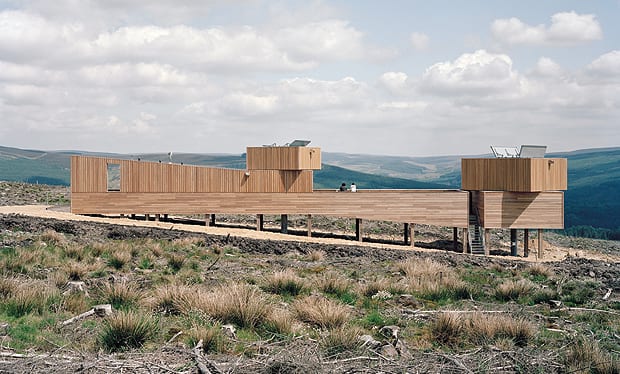
words Beatrice Galilee
An astrological belvedere perches on the top of a remote mountain in Kielder Water & Forest Park in northern England. By day its timber-clad promenade offers views out over a rich forests for walkers and cyclists, and at night its two rotating cubic turrets contain sophisticated telescopes used to look into this rare part of the British sky that isn’t ruined by light pollution.
The design, by London-based Charles Barclay Architects, was commissioned by the Kielder Partnership, which aims to promote new public architecture in the forest. Barclay’s other projects include a James Turrell “Skyspace”. The remit of the partnership is to develop the forest as a leisure destination and attract visitors. “The main purpose [of the observatory] is for amateur and outreach work to include local communities to get people into astronomy,” explains Barclay. It will also be used for “star camps”, where astrologers congregate to discuss the latest celestial happenings. “We’re the mother ship. If that’s not mixing metaphors too much,” he laughs.
The observatory contains a single “warm room”, an insulated space with a wood-burning stove, electricity points for internet connection and room for talks and slide shows. “There’s no heating of course with the telescopes, so it’s important to have a place where you can defrost on cold winter nights.” The structure is totally self-powered, with a wind turbine and photovoltaic panels running the lights, computers and shutters. The architects collaborated with local astronomers to refine the design, and the cubic turrets
are rotated by hand.
The choice of wood was important to create a relationship to the forest setting. It also suggests the forest’s industrial heritage – it is dotted with disused coal mines, which used timber structures to support pulleys and trusses.
















